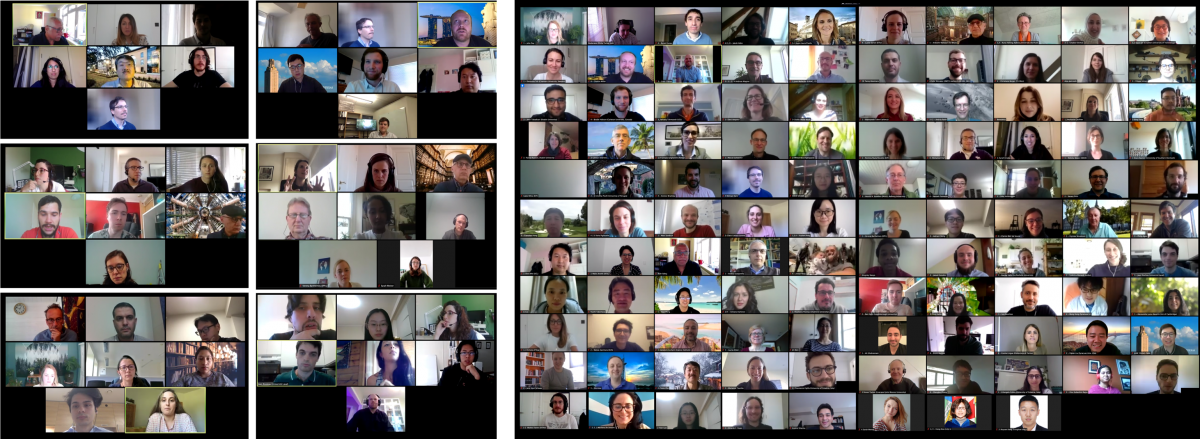The Energy and Climate Change Division (ECCD) and the Sustainable Energy Research Group (SERG) within the School of Engineering at the University of Southampton, UK, hosted the International Energy Agency’s (IEA) Energy in Buildings and Communities (EBC) Programme Symposium and Task Group meetings addressing Occupant-Centric Building Design and Operation (‘Annex 79’) from 20-23 April 2020. In light of the COVID-19 pandemic, the 4-day event took place virtually using a video and web conferencing platform. This was the first time the event was held online. The ease of attending virtually, facilitated by the Management Team, resulted in a record attendance of over 230 delegates from 25 countries and 82 institutions.

Map of IEA Annex 79 attendees
Leading academics, practitioners, policy-makers, manufacturers and students from the fields of engineering, architecture, psychology, sociology and marketing came together to exchange ideas and good practice. Creating and strengthening partnerships to integrate and implement occupancy and occupant behaviour into the design process of buildings and their operation, enhancing both energy performance and occupant comfort.
The first two days of virtual meetings (20-21 April) comprised the 5th International Symposium, and a full programme of six sessions, chaired jointly by Stephanie Gauthier and AbuBakr Bahaj of ECCD. With the various presentations and question and answer sessions covering cutting-edge research from around the world, including topics as diverse as building simulation, teleworking, ‘big data’ modelling, nudges and behaviour change, introducing a range of case studies and academic approaches to the attendees.
The Symposium presentations can be downloaded as a PDF with recordings of the presentations and question and answer sessions available here.
The final two days (22-23 April) was dedicated to the 4th IEA EBC Annex 79 Expert Meeting (Fig 3). These expert meetings discussed, planning and pursuing research activities and initiatives for the five year Annex 79 across the four sub-tasks:
- Subtask 1: Multi-aspect environmental exposure, building interfaces, and human behaviour.
- Subtask 2:
- Data-driven occupant modelling strategies and digital tools.
- Subtask 3: Applying occupant behaviour models in performance-based design process.
- Subtask 4: Development and demonstrations of occupant-centric building controls.
These Subtask Meetings included an overview of activities within each subtask (plenary) and then three breakout sessions held as Breakout Rooms within the digital platform. The Rooms provided flexibility to allow participants to join appropriate sessions and move between the subtasks. The discussion that ensued in the various sessions covered how to implement innovations and the transfer of knowledge between researchers and practitioners in the best practice for occupant-centric building design and operation. With participants sharing, a post-meeting drink together in various time zones honouring Annex tradition.

IEA Annex 79 Smposium presenters (left) and Expert Meeting attendees (right)
The follow-up event will be held at the University of Southern Demark lead by Professor Mikkel Baun Kjærgaard, please see annex79.iea-ebc.org for further details.
Further information on our learnings from hosting a virtual 4-day conference can be found in our report here.
